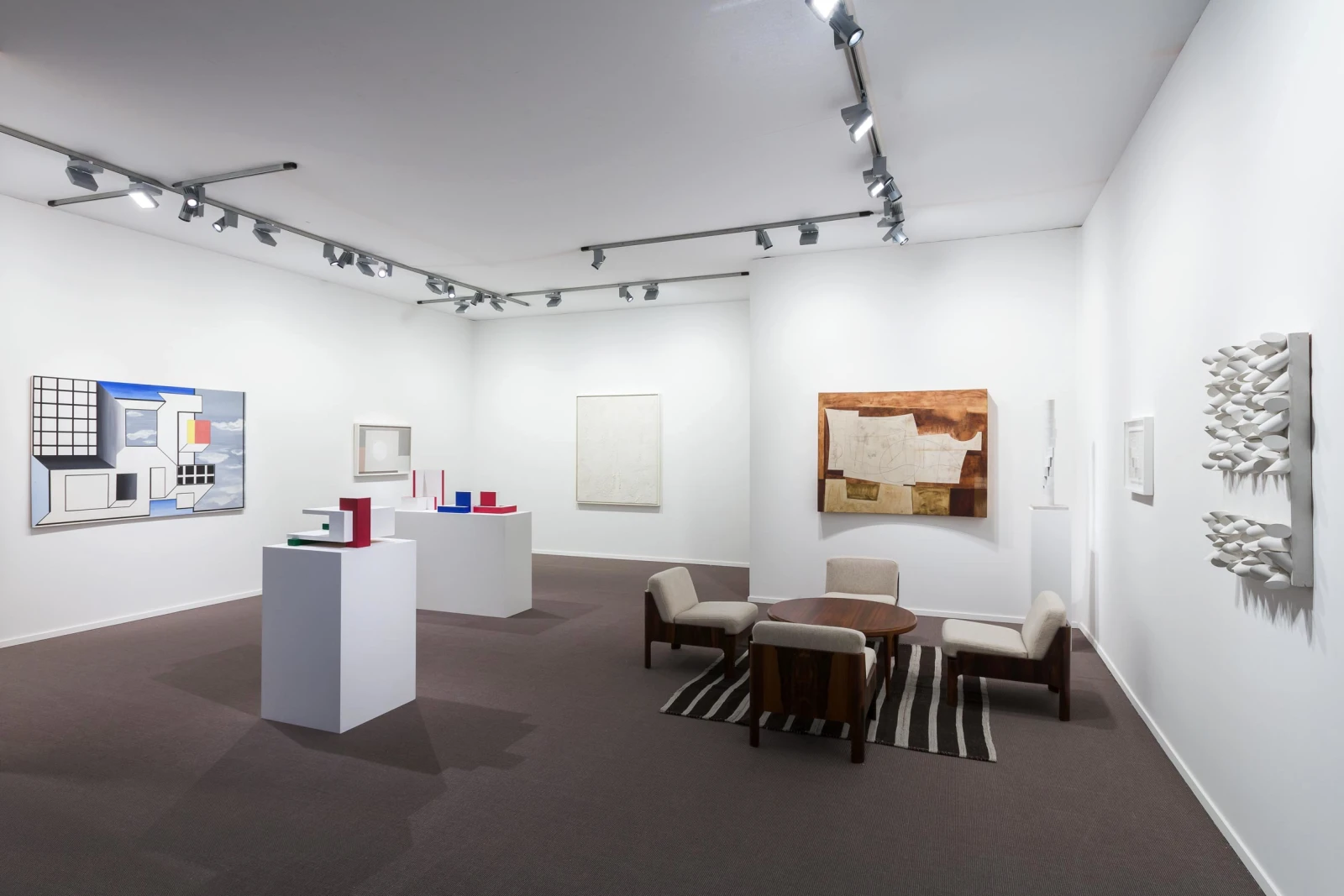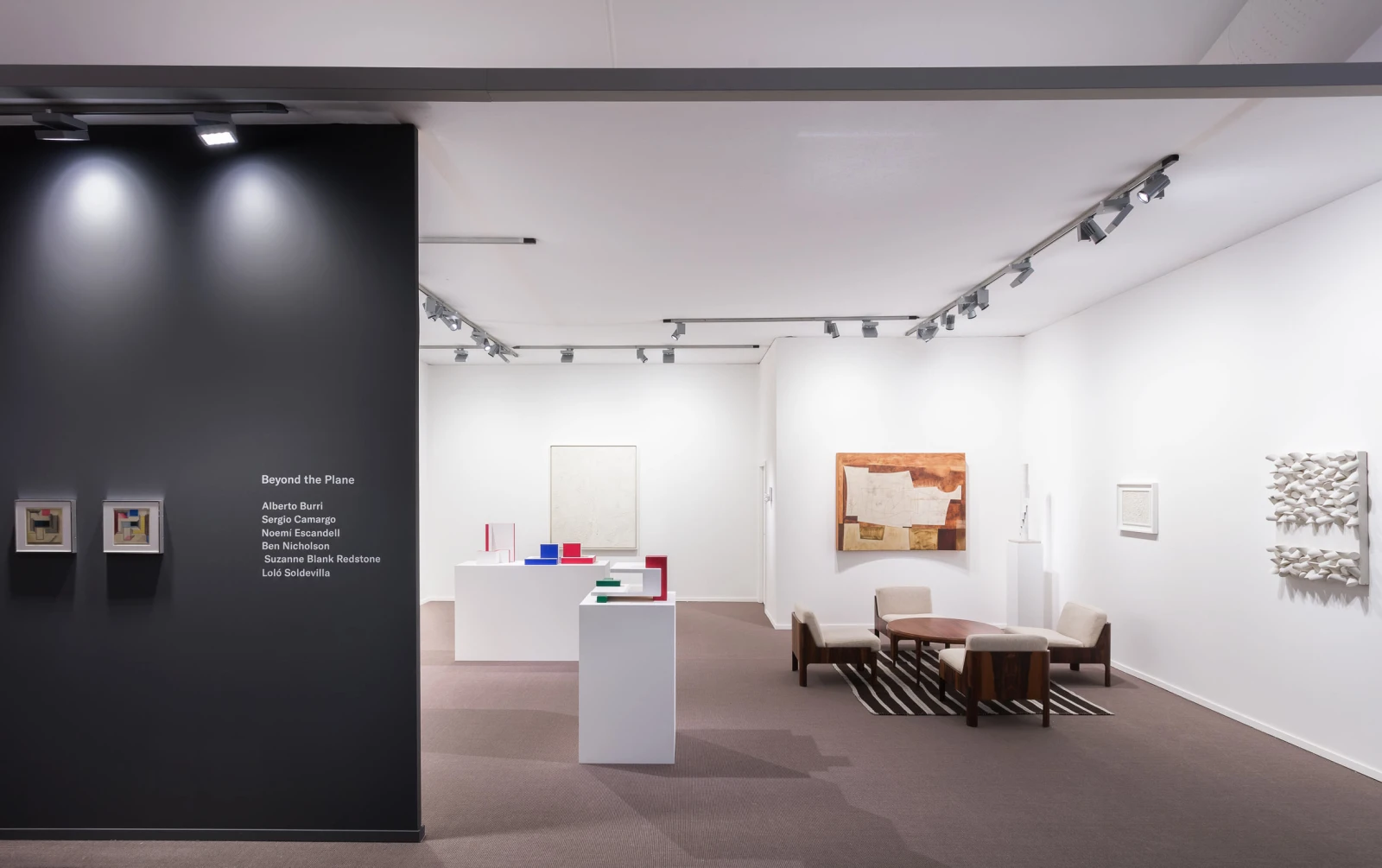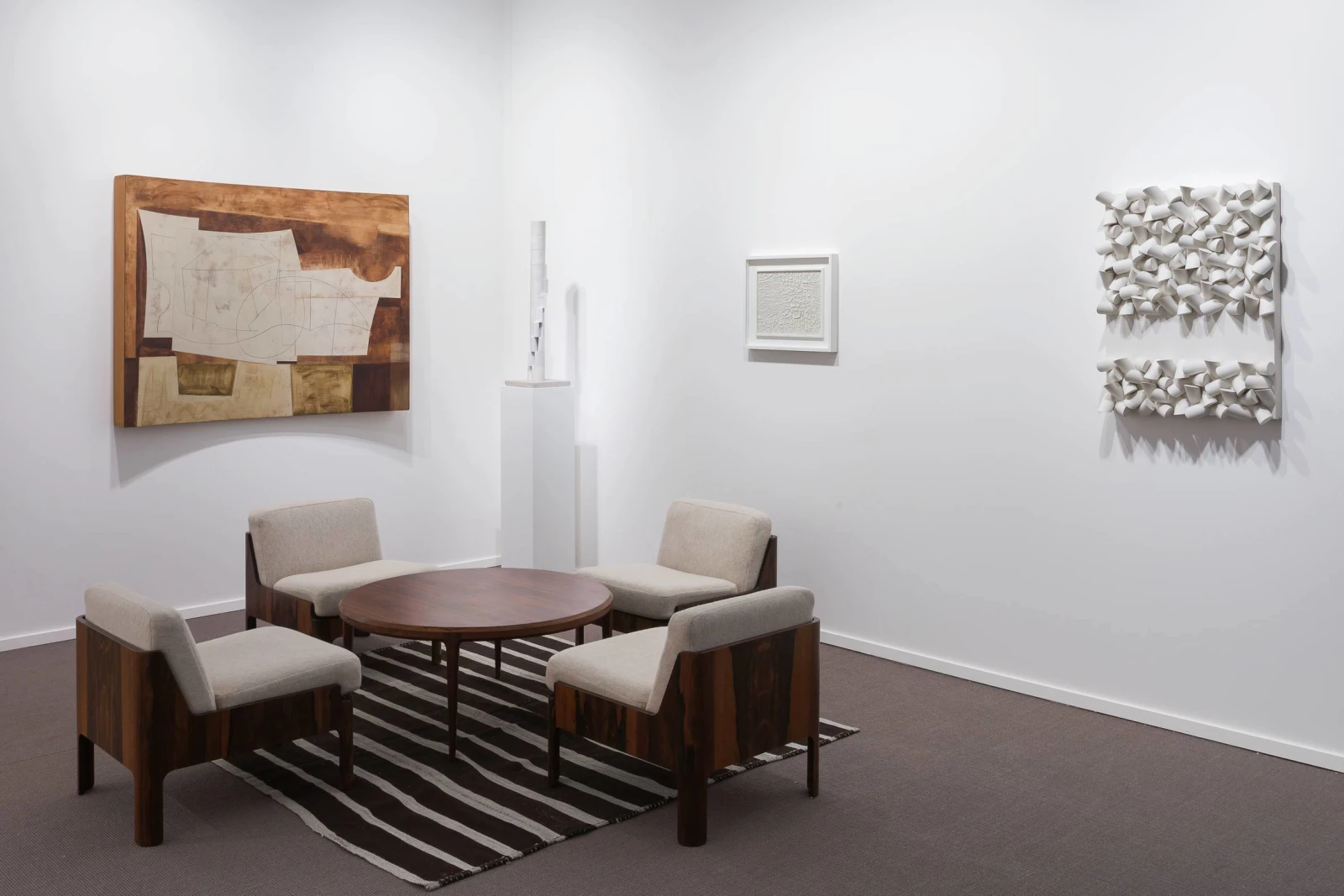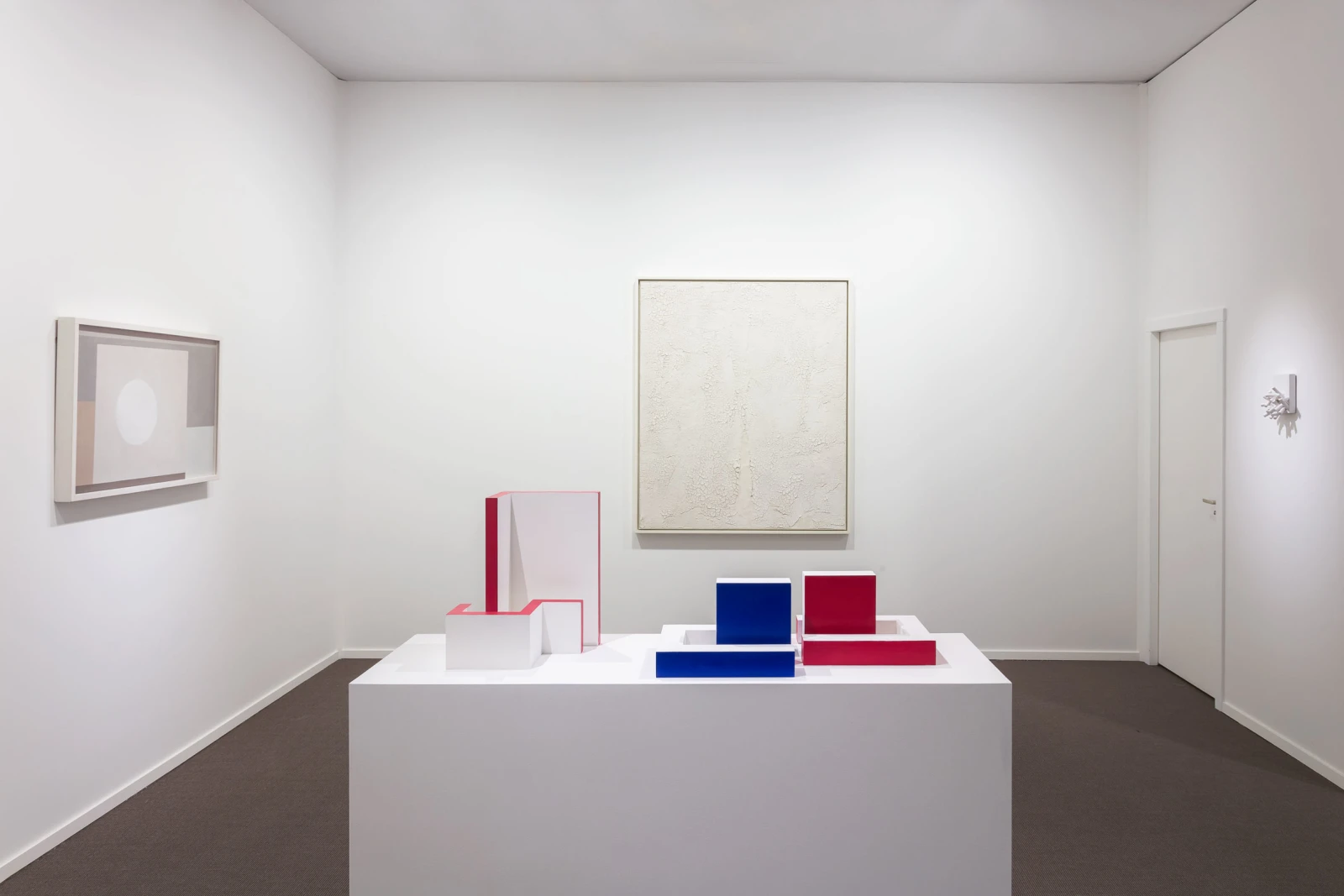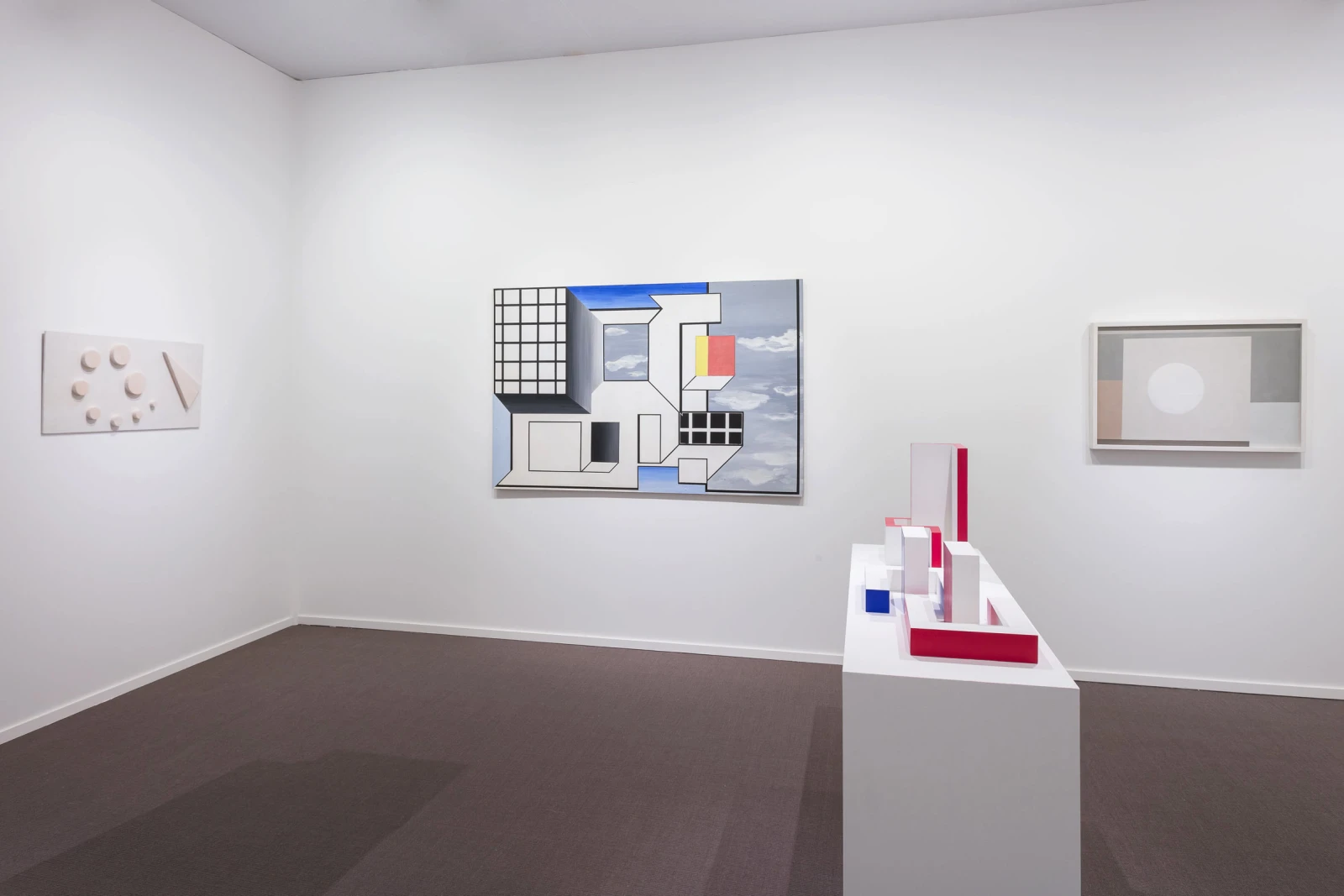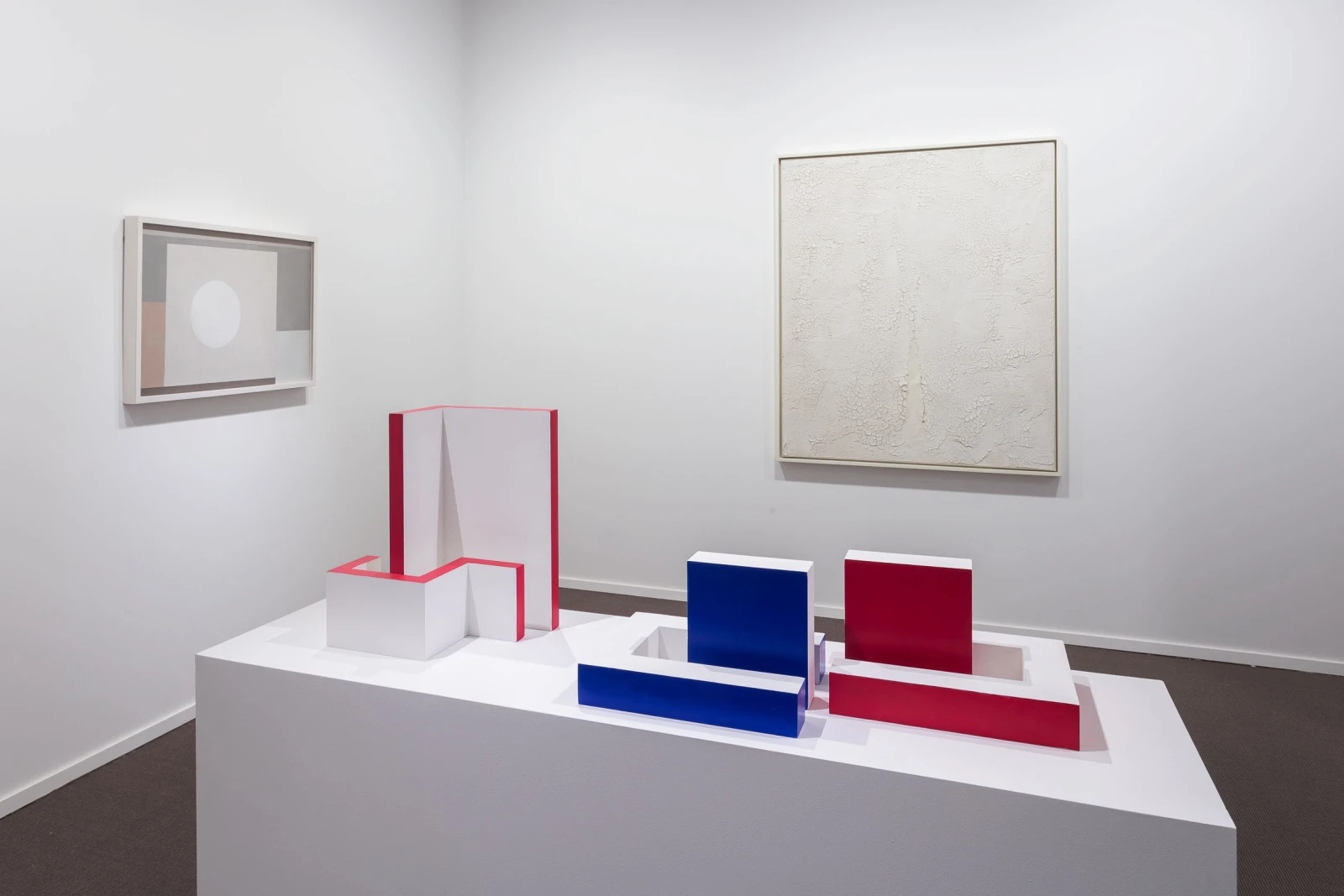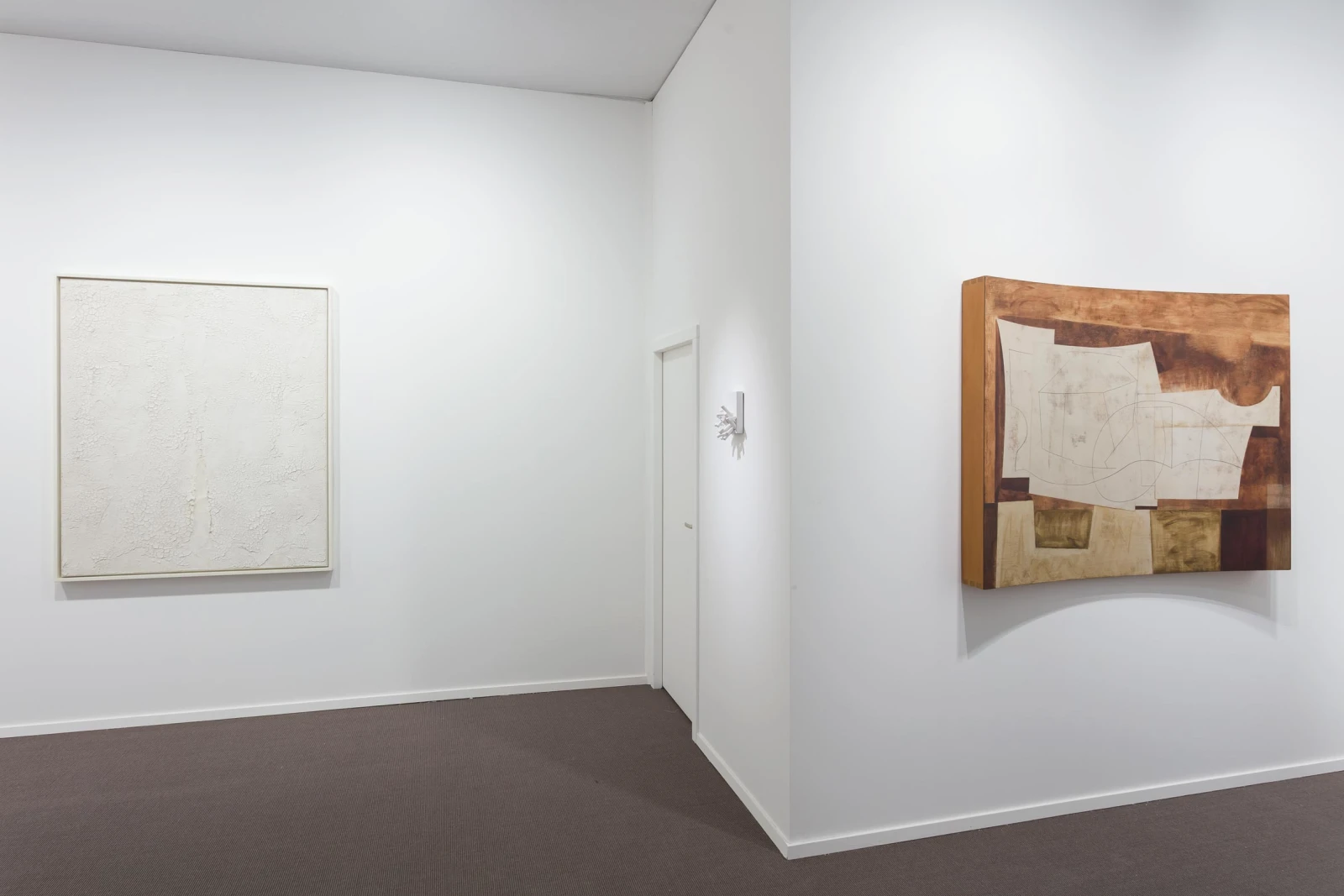Stephen Friedman Gallery presents ‘Beyond the Plane', a curated exhibition of six international artists shown together for the first time: Alberto Burri, Sergio Camargo, Noemí Escandell, Ben Nicholson, Suzanne Blank Redstone and Loló Soldevilla. Working in Europe, North and South America, these artists engage with the picture plane to explore questions of perception, space and form. While some of them interrogate the illusionistic space of the two-dimensional, others refute the representational qualities of the picture plane altogether by highlighting its material presence.
Ben Nicholson, a seminal figure of British Modernism, radically disrupted the picture plane in his pursuit of formal harmony. In the 1930s, Nicholson began to move away from canvas to board, and from subject to object, by creating abstract reliefs. Playing with visual depth, the artist explored the spatial effects achieved by incorporating shallow circular and rectangular depressions into his paintings. The apparent simplicity of Nicholson's works belies the complexity of his precise use of line and form. In his most radical paintings, colour was reduced to just white or grey to achieve a heightened sense of purity. The transcendental nature of Nicholson's works can also be seen to manifest the artist's defiance against the rise of nationalism in Europe during the late 1930s, pointing instead to a utopian vision of social unity that was similarly expressed in modernist architecture.
Loosely affiliated with Neo-Concrete Art, Sergio Camargo was a Brazilian artist known for his sculptures, wall-based reliefs and architectural commissions. Whilst less reductive than Nicholson, Camargo shares similar formal concerns regarding space and volume. Minimal planes of marble and wood are disrupted by geometric and cylindrical protrusions, generating a rhythmic play of light and shadow. In his wall-based reliefs, Camargo straddles the boundary between painting and sculpture by drawing attention to the physicality of the picture plane. Despite the rigour and precision that characterises all of his sculptures, there is also an organic quality to the forms that undulate over their surfaces.
Heavily influenced by Bauhaus pedagogy, Suzanne Blank Redstone's architectonic compositions from the 1960s examine how space is constructed on a two-dimensional plane. Working against Clement Greenberg's notion of flatness, Redstone embraced illusionistic space in her works by looking at the use of perspectival depth in Renaissance paintings. Nevertheless, Redstone's prioritisation of painting's formal properties - colour, line and space over content still positions her as a painter concerned with modernist principles. The artist's ‘Portal' works (1966-69) act as gateways into virtual dimensions, comprising maze-like configurations of straight-edged, vibrantly coloured forms that recede into or protrude out of the picture plane.
Noemí Escandell's abstractions disrupt the hegemonic narrative associated with Minimalism. Her reductive, geometric works from the mid-1960s emerged at the same time as the seminal exhibition ‘Primary Structures' (1966) at the Jewish Museum in New York. Forming the foundations of what we now refer to as minimalist art, the works in the show shared general characteristics of scale, geometry, and use of industrial materials. Simultaneously, Escandell was producing works in Argentina that shared analogous formal properties, but encompassed a deeper, socio-political register. In the face of state censorship, Escandell worked within the realm of the two-dimensional to create imaginary structures. In essence, the utopian forms in her drawings are aspirational. The artist has only recently realised these colourful, architectural constructions in real space, using the original designs conceived in the 1960s to make physical structures.
Alberto Burri destabilised the formal relationship between painting and relief sculpture by using unconventional materials such as plastic, burlap and tar and employing techniques which required a precarious balance between chance and control. Contesting the existential content of post-war abstraction, Burri focused on the physical construction of his works and their materiality. By piercing, tearing and burning the picture plane, the artist refuted any space for illusionism by drawing our attention to the immediacy of the materials he used. Nonetheless, his skin-like compositions of melted and charred plastic from the Combustioni plastiche series, as well as the fractured surfaces of his Cretti works, evoke deep sensations of pain and suffering.
A seminal figure of Concrete Cuban art, Loló Soldevilla embraced hard-edged, geometric abstraction in a time of political and social turbulence during the 1950s. Fluctuating between different planes, Soldevilla's explorations in two and three dimensions feature optical convergences of shapes and colours that play with the viewer's perception of spatial depth. Intuitively driven, each of Soldevilla's works attempts to construct a new form of reality. As a whole, her collages, paintings, and kinetic sculptures manifest a utopian aesthetic reminiscent of Nicholson's own search for formal harmony.

